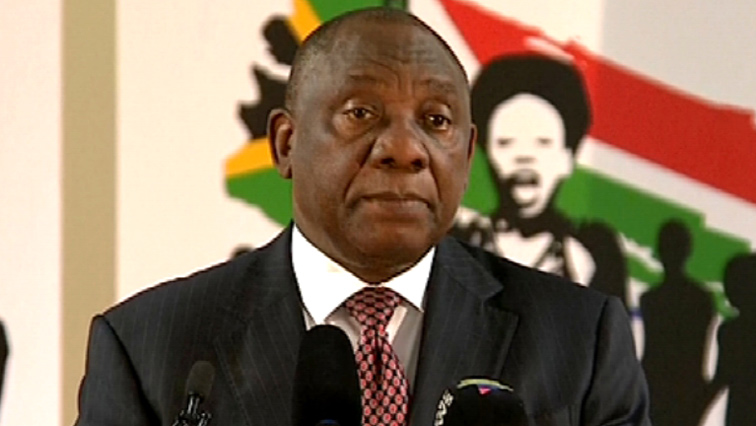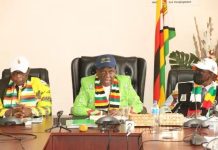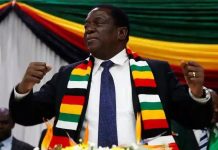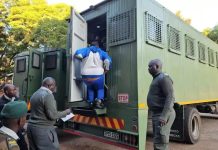Amid a spiralling economic and political crisis, President Emmerson Mnangagwa addressed the people of Zimbabwe on Tuesday 4 August. His speech, although sudden – four days after his government’s violent clampdown on the July 31 citizen protests – was highly anticipated.
There may have been a desperate hope in some sections of the bruised citizenry that the president would, perhaps in the remotest of ways, acknowledge their suffering and hint at atoning for the state’s brutality. However, the ‘crocodile’ neither acknowledged the legitimacy of the widespread grievances against his leadership nor took any responsibility for bringing the country to this precipice.
Instead, President Mnangagwa argued that his administration “has been undermined by the divisive politics of the opposition, sanctions, cyclones, droughts and now COVID19”, and blamed widespread protests on “a few rogue Zimbabweans acting in league with foreign detractors.” The President’s speech exposed a tone deaf and intransigent government at war with its long-suffering citizens.
For the past two decades Zimbabwean citizens have engaged in diverse, valiant efforts to use every legally available avenue to expedite democratic reform. Many Zimbabwean citizens have made heroic efforts to shed light on the gross corruption and mismanagement that has characterised ZANU-PF’s rule and created a staggering man-made disaster. They are currently caught between a regime willing to go to any lengths to crackdown on dissent, the need to navigate the day-to-day difficulties of securing precarious livelihoods, and the fear of contracting COVID-19.
In the face of an unrelenting regime and rising from the crushed hopes of 31 July 2020 protests, Zimbabwean citizens have grafted the #ZimbabweanLivesMatter campaign onto ‘the energy and anger of the global’ outcry that #BlackLivesMatter. Can the South African government, whose President has taken an unequivocal stance on #BlackLivesMatter continue on an indeterminate posture on the plight of its neighbour’s black lives? Their economic and political fate, as aptly observed by SAIIA CEO Elizabeth Sidiropoulos, is intertwined with its own and that of the region.
South Africa is ideally placed to push for change in Zimbabwe, with the two countries sharing many social, political, and economic ties. South Africa remains one of the country’s most important trading partners. Zimbabwe imports 40 percent of its total imports and exports 75 percent of its total exports to South Africa. However, despite the countries’ growing stake in each other’s fates, South Africa’s response to the deepening crisis across the Limpopo leaves much to be desired. Zimbabwe is now considered one of the four most food-insecure countries in the world, alongside Yemen, Somalia and South Sudan. More than 60 percent of Zimbabwe’s 15.6 million people are considered food insecure. Around one in three children under 5 years old suffer from stunted growth as a result of chronic malnutrition. The country has the highest inflation rate in the world at around 800 percent, and the International Monetary Fund (IMF) projects economic contraction of 10.4 percent in 2020, following a 12.8 percent contraction in 2019.
The healthcare system has collapsed, and every day Zimbabwean citizens face persistent fuel shortages and rolling blackouts. The number of Zimbabweans using illegal entry points along the Limpopo River to access medical services and basic commodities has dramatically increased in recent weeks, heightening the chances of cross-border transmission of COVID-19 in both directions. As many desperate Zimbabweans will make the dangerous journey south, the South African government is poorly prepared to deal with an escalating migrant crisis. The country is wrestling with its own record unemployment levels. Increasingly, regional integration and the flow of people, commodities, knowledge and information means that insecurity anywhere is a threat to security everywhere, challenging the principle of non-interference which has guided foreign relations between southern African states and become institutionalized in the Southern African Development Community (SADC). Decades of non-interference, liberation politics, and ‘quiet diplomacy’ on behalf of the ANC has simply allowed a political and military elite in Zimbabwe to plunder the country’s resources, undermine democracy, and create an economic crisis with implications for the wider Southern African region.
A more urgent and concrete stance is imperative. It is befitting therefore that after what had seemed like another bout of silence, the Government of South Africa, through the Department of International Relations and Cooperation (DIRCO) ‘noted with concern the reports related to human rights violations in the Republic of #Zimbabwe’. However, from the Mbeki to Zuma administrations, this political gesturing is well-worn. Building on #ZimbabweanLivesMatter, a campaign that has attracted resounding regional and international intervention calls from ordinary citizens, celebrities, politicians, diplomats and multi-lateral institutions alike, it is now ‘easier for SA and the SADC to begin a meaningful engagement with all stakeholders’. But will they? South Africa in particular has an opportunity as a strategic arbiter to harness all these voices across multiple platforms that can begin the work of persuading stakeholders to come to the negotiating table. It is time for the South African government to boldly break out of the ‘liberation war-pact’ cocoon and stand with the citizens of Zimbabwe.






